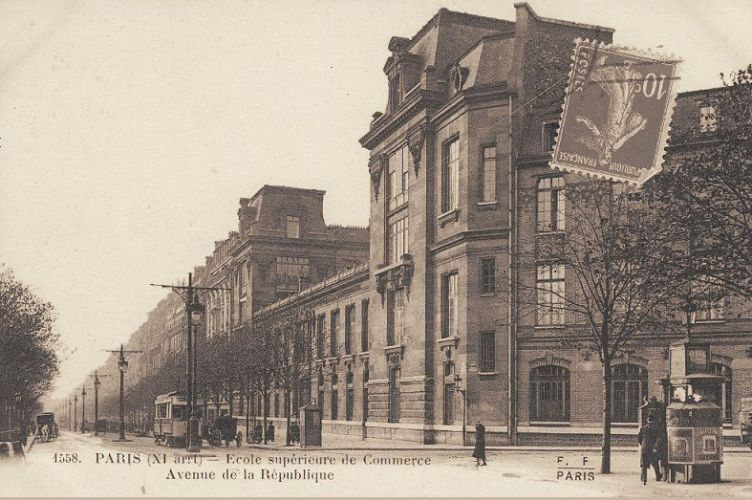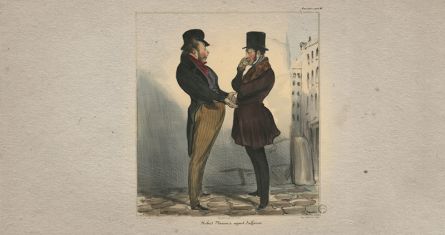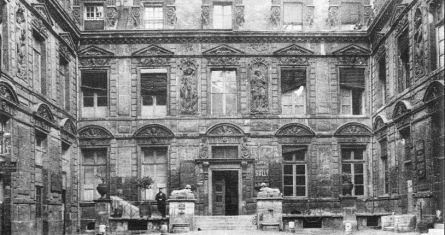In that Year 1898
It would then go on to occupy several other sites before moving to 102 rue Amelot in 1838. Believing that it was too cramped for the number of students at the time, the Paris Chamber of Commerce (CCI) discussed moving the school to more modern and spacious premises at the start of the 1890s. After a long search and negotiations with the Mayor of Paris, at the end of 1894 it acquired 5,325m2 at 79 avenue de la République.
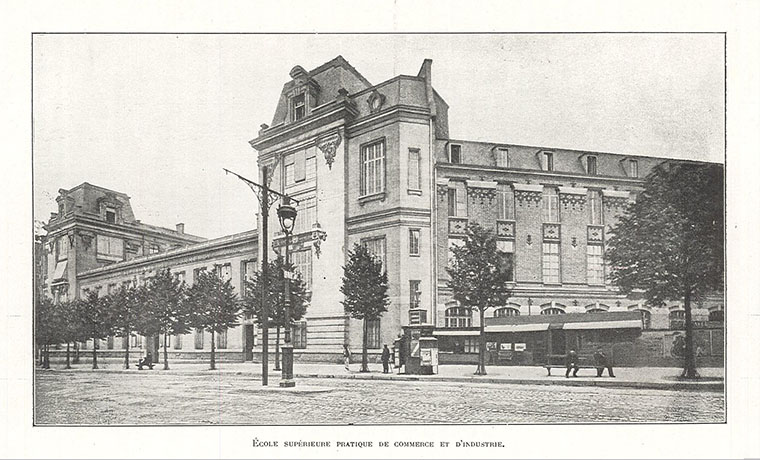
The Cost of the Building
The cost of purchase and construction was estimated at 2 million francs (equivalent to 5.5 million euros) and the City Council provided a subsidy of 600,000 francs. Following an architecture competition, the design proposed by architects Joanny Bernard and Emile Robert was chosen. The inauguration of the building took place on 23 November 1898 and was attended by the President of the Republic at the time, Félix Faure.
In April 1900
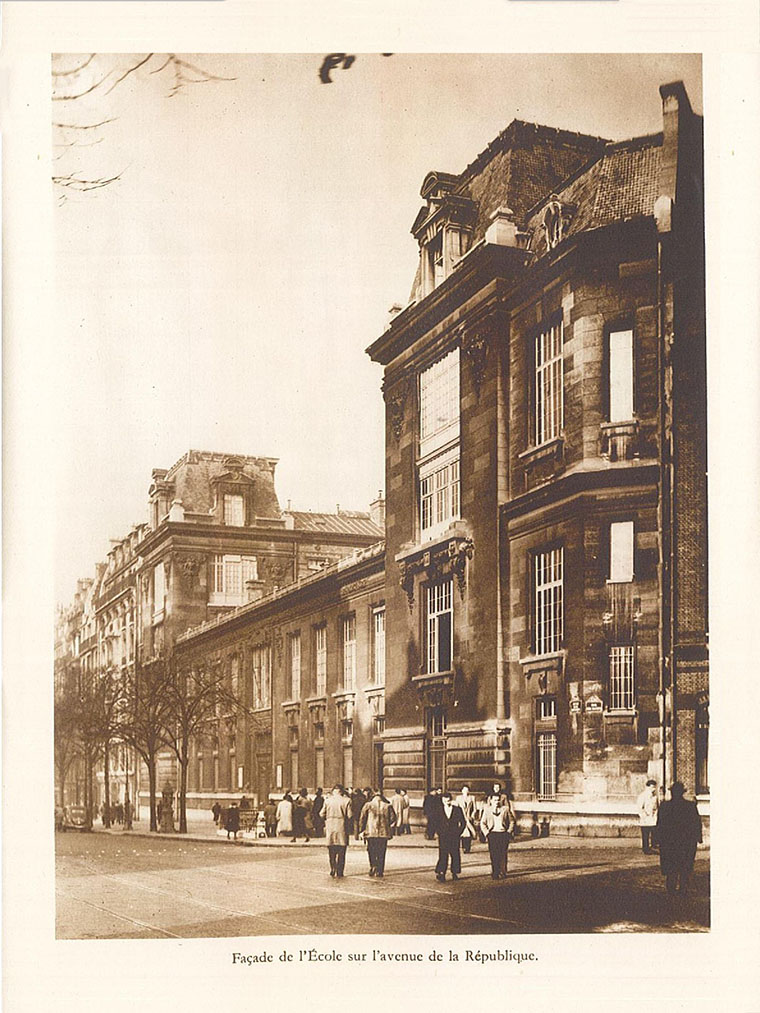
By April 1900, the CCI had bought two adjacent plots, situated on rue des Bluets, for the school to grow in order to support its development. An article written in 1905 describes it as follows: “On Avenue de la République, a wide and lively street, American-like with its electric lights, its paved wood on the ground that is constantly crossed by fast-moving trams, with here and there the opening of metro stations, stands the monumental facade of the school which reaches 80 metres.”
From 1914 to April 1919
From 1914 to April 1919 the school was turned into a military hospital, and during this period students had to take their classes on the campus of the Ecole des Hautes Etudes Commerciales (HEC Paris), on boulevard Malhesberbes.
ESCP stayed inside Paris
There were no notable changes to the premises until the start of the 1970s, which saw HEC leave for Jouy-en-Josas and ESSEC for Cergy-Pontoise. As it had decided to keep the school inside Paris, the Paris Chamber of Commerce and Industry needed to modernise its facilities as well as its schooling methods, with a shift from teaching in small groups to courses given in amphitheatres. In 1973 a tower made of glass and steel was inaugurated, replacing the central part of the original building. The main idea of the extension was to create new floors where on one side there would be the professors’ offices and on the other the classrooms, to allow for exchanges between the two.
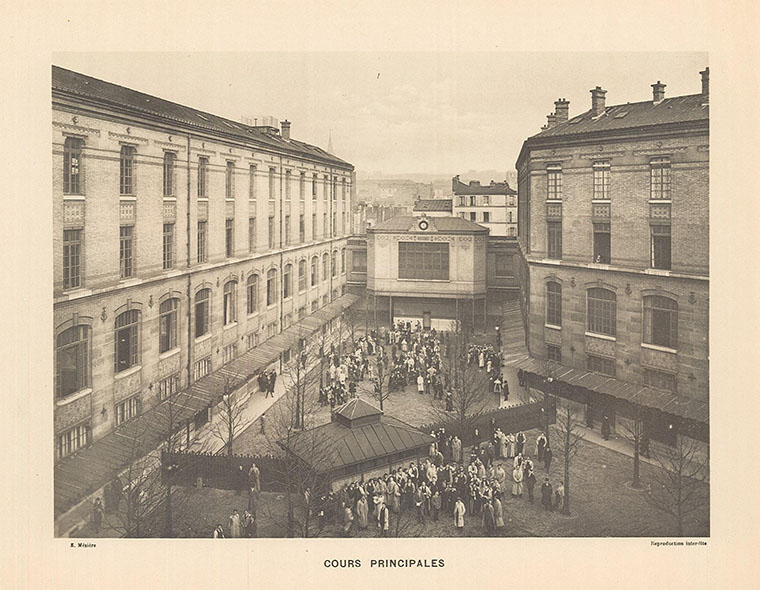
The renovation of the Building
Then, in addition to maintenance and constant renovation of the building, a major program of work was started in 1999 and brought radical changes to the reception, the kitchens and the restaurant of the school.
In 2010s
The start of the 2010s saw a succession of new instalments of work to adapt the premises to the teaching methods, now involving new technologies, and connected lecture halls were offered to students, such as the Gélis amphitheatre and room 4310, the conversion of which was made possible thanks to a contribution from the alumni of the class of 1969.
Today
Today, the capacity of the school, all campuses combined, is not sufficient to keep up with the successive developments of the school. Today it is a university that offers all types of degrees from Bachelor to PhD level, and has also developed remarkably in the realm of Executive Education to reach a leading position in the global ranking of business schools.
There are therefore plans to expand the Berlin campus and to extend the London campus. New sites are also being sought in Turin and Madrid, as these campuses are no longer adapted to the number of students who attend classes, and the question of the Paris campus is currently under study.
Campus
